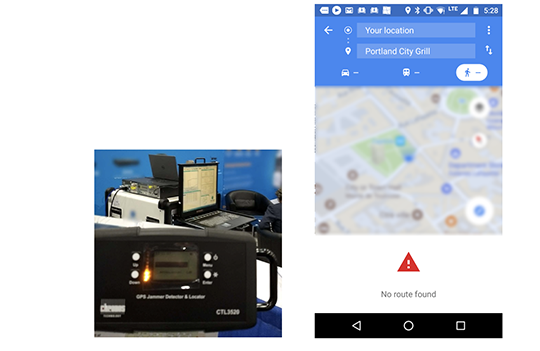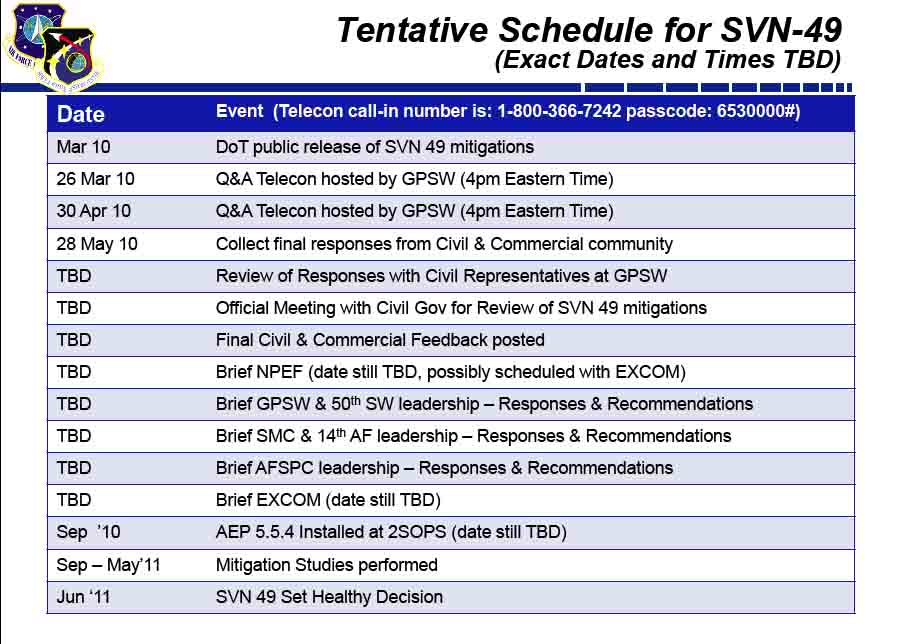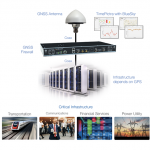[SIGNALS exclusive] With customers demanding greater security against hackers and jamming, GNSS receiver manufacturers are incorporating a widening array of techniques to thwart interference both natural and nefarious.
But sometimes security-related innovations take a while to catch on.
[SIGNALS exclusive] With customers demanding greater security against hackers and jamming, GNSS receiver manufacturers are incorporating a widening array of techniques to thwart interference both natural and nefarious.
But sometimes security-related innovations take a while to catch on.
In 2011 NovAtel developed an antenna with a null steering element able to deal with three jammers, said Sandy Kennedy, chief engineer for the company and its director of GNSS cards. Although prospective customers thought the unit was a really good idea, Kennedy said, it wasn’t until November 2014 that demand for the unit coalesced after the Organization for Security and Co‑operation in Europe ran into jamming over Ukraine.
“They had an unarmed Camcopter there, that was just monitoring — that was its sole reason for being out there. And it was jammed and grounded,” Kennedy said. They installed Novatel’s GAJT-AE and were able to resume flights and their mission despite the jamming.
“Autonomous vehicles are a big challenge,” stressed Daniel Ammann, co-founder of u-blox, adding that intentional perturbations like jamming and spoofing are “much harder” to solve than the more numerous, naturally occurring problems such as tree canopies. Among the threats, he said, are man-in-the-middle attacks with “somebody cutting the wire and injecting a signal with the wrong position output.”
Ammann said some problems could be dealt with using signal redundancy and good front-end design including a high a compression threshold and selectivity when it comes to frequencies. Adaptive notch filters can be used to counter fast sweeping jammers
“Internally, in the products, we do quite a bit of signal processing,” he told attendees. The firm also tests, he said, against “captured real-world threat scenarios.“
The threats, however, keep changing, the speakers agreed, forcing constant adaptation and fresh approaches.
“At the end of the day it’s an arms race,” Ammann said.
Trimble has shipped roughly a million timing receiver units over the firm’s lifetime, said Director of Engineering Stuart Riley, and while jamming is a concern, those units have a built-in, 24-hour holdover that addresses most issues.
“We’ve only had about a dozen instances that really got in the business and were big, big issues,” said Stuart. “I don’t think in any case they actually were longer than 24 hours before they either found the source of jamming or it just went away.”
Although the biggest challenge the firm has, he said, is the productivity impact of natural occurring interference from trees and nearby buildings, the company has built in mitigations for other types of signal degradation. These include radio frequency, multi-bit and digital filtering and high, one-decibel compression in the low noise amplifier (LNA). Trimble has also been adding extra sensors such as inertial measurement units (IMUs).
Broadcom has half a dozen elements in its arsenal including the use of multi-constellation signals across all its chips, said Frank van Diggelen, the firm’s vice president of GPS technology. In fact it’s been more than five years since Broadcom offered a GPS-only product, he said, and they have been building tri-band sets for the last two years.
“That (tri-band chip set) right away gives consumers quite a level of security and robustness,” he said.
In addition, over the last couple of years the company has been building chip sets that support GPS, Beidou, QZSS, Galileo and GLONASS.
“Maybe about half of you have that in your pocket right now, though you may not know it,” he quipped.
The reason for taking this approach was to get better performance in the urban canyons of big cities, he told the audience at the Institute of Navigation’s ION GNSS+ conference earlier this month. Even so, he adde, he received a call from someone involved in jamming exercises who said his phone continued to work despite the signal degradation.
Broadcom chips also incorporate spectrum analyzers, surface acoustic wave (SAW) filters and programmable notch filters — which can be made wider or have their center frequency shifted.
Those chips may be evolving further once Avago finishes acquiring Broadcom, van Diggelen hinted. Avago is the world’s biggest producer of thin-film bulk acoustic resonators or FBAR filters. FBAR filters are more sophisticated than SAW filters, he said, but are used less often because of their expense.
“You might hear more about FBAR filters next year,” he said.
Receiver Certification, Yes But No
Innovation could be hampered if certifications were established, the majority of those representing manufacturing firms said.
Riley said that, while certification is needed for safety-of-life applications such aviation, market forces drive security far better than setting receiver standards or certification requirements.
“I’m glad the plane I flew on coming here was certified,” Riley said, “(but) for us, we’re doing very rapid spins on architecture and firmware — and, really, innovation could be hindered by having to go through rigorous certification.”
“I suspect the people making standards don’t know all the things that we’re doing,” said van Diggelen. The latest work is not public, he explained, and as a result, regulators may set requirements based on old technology.
Even if regulators do make stipulations based on the very latest techniques, the standards will divert energy into manufacturing and away from developing ways to defeat future threats, the speakers insisted, saying market demand is better at spurring him innovation, the receiver manufacturers asserted.
“Nobody drives us like our customers do,” said van Diggelen.
The two customers on the panel, however, said they wanted to see requirements adopted.
“We prefer some kind of certification for testing and making sure,” said Shankar Achanta of Schweitzer Engineering Laboratories, Inc., which supports electrical and Internet networks. “We’re doing that in our labs using the (National Institute of Standards and Technology)-based analysis systems and whatnot. So it would be nice to have a standard for certification to show that the receivers meet their published specifications.”
Certification would be “a large help,” agreed Andrew Bach, vice president and chief architect for financial services at Juniper Networks, but research would be necessary to ensure standards reflect the way receivers actually are used.
“I have noticed that the way we tend to use (receivers) in the financial industry does not reflect how they were certified. So, we tend to find issues, deficiencies, even though a particular product has been certified,” he said.
While standards would offer common definitions that could be very useful when testing and comparing receivers, said Kennedy, setting specific requirements would effectively curtail innovation to the span of that new, legal yardstick.
“If you come to the point that you have a standard, she said, you are going to build to that standard — no more, no less,” she explained. “You may have innovation inside of that very well-defined box, in how you’re managing to meet those requirements, but you are not coming out necessarily with anything new on a different way to meet that requirement or something to push the boundaries of what’s actually possible.”
Alex Strattan, principal engineer at Rockwell Collins, which deals regularly with certification in support of its aviation receivers, suggested standards were the right approach, although he acknowledged the potential shortcomings.
“In a highly regulated industry,” he said, “I’m going to go back to certification. You are only as good as you’re certified to be — although we may find out the limitations of that. What is it Warren Buffett says? ‘You find out who doesn’t have a swimming suit when the tide goes out.’”






